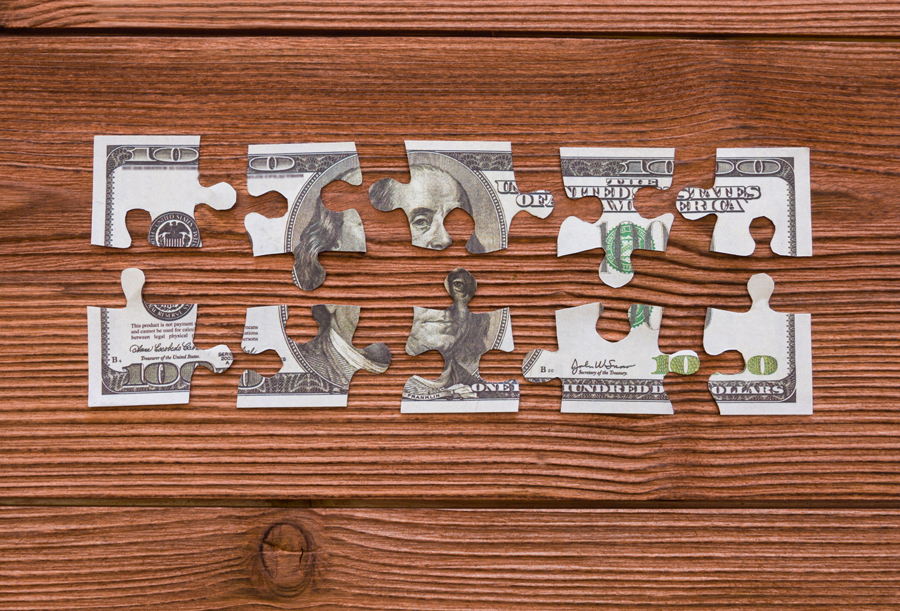Comparing $100 in cash today to its relative value in the year 2000 divulges that it lost between $36 and $81 (depending upon the value category) in relative value due to inflation, devalued currency and various other reasons. For example, in 2000, had you placed $100 in a savings account that paid, say, a generous 3%, you’d have earned roughly $51 over the last 17 years and, subtracting the $36 value loss, you would have earned only $15. Had you placed that $100 in a garden-buried fruit jar, you’d have lost the full $51.
Had you invested the $100 in NASDAQ stocks in 2000, you would have bought high and quite possibly not regained your initial investment until 2016. Remember 2009?
MeasuringWorth.com says you can determine relative value via an online purchasing power calculator and, in the above example, the $100 factored in the percentage increase in the consumer price index (CPI) between 2000 and 2017, which reveals the relative value.
There’s more, especially for signshops. First is the contemporary cost analysis, e.g., the cost of a year 2000 sign-building project. A sign from back then that required $100 would cost $151 to produce today.
Bummer.
WHERE DID THE MONEY GO?
What happened to the money is complex, but the two causes for the loss of buying power are inflation and the floating value of the dollar (when contrasted against the world market). Like it or not, you shop and buy in a world market. Read the labels – groceries, clothing, hardware, cars and supplies; it goes even deeper when you research components.
Advertisement
The currency market – a loosely held organization of banks, central banks, commercial firms, investment management firms, hedge funds and retail foreign exchange (Forex) brokers and investors who buy, sell, exchange and speculate on different currencies – constantly affects the value of money. They treat currencies like baseball cards.
Most of their transactions occur via linked global computer networks owned by large banks and brokers. No surprise, the US dollar is the most traded, followed by the Japanese yen, the British pound and the Swiss franc.
These diverse entities speculate on currency values. The variables are market-demand with assessments generally based on a country’s economic strength, growth and interest-rate differentials. This is also where the terms “strong” and “weak” apply to currency. A “strong” dollar is one that sells high in the currency market. In real life, a strong dollar upwardly affects the price other countries pay for US goods, but it also allows US buyers to purchase foreign-made goods at a lower value rate; thus, a strong dollar is good for the average Joe.
The catch-22 is that a strong dollar lowers US export demand which, in turn, hurts manufacturing jobs.
US companies that export products prefer a weak dollar because it allows them to be more competitive when selling against in-country manufacturers. Conversely, a “weak” dollar (compared to other currencies at that time) means that the average Joe pays more for imported goods because the US dollar value – and therefore Joe’s buying power – are proportionally diminished.
VALUE CHAIN
The scale of these transactions pervades what is described as the “value chain,” the set of activities and processes that industrial firms accomplish to deliver products or services for domestic or foreign markets. The extensiveness of such fluctuations touches the entire manufacturing chain, its systems, subsystems, processes, resources and numerous other activities that determine costs and profits. A classic signshop example is how oil prices affect the cost of plastic materials and other petroleum-based sign products.
Advertisement
IT’S NOT GOLD, OR EVEN STEEL
So, what’s the lesson? Consider that world currency today is “fiat money;” that is, paper money with a value based upon pliable values (what a government declares and that currency’s relationship in the world currency market). Your best defense is to weigh the anticipated future value of any venture money against various investments, especially in equipment that will generate more dollars than would savings or stock investment accounts. Also, try to travel and buy foreign-made products when the dollar is strong because the dollar’s value is higher in other ports during these periods. Even better, if you’re about to buy an expensive imported machine, research the dollar-value proposition of the maker country’s currency against that of the US dollar, to see if you have the advantage.


 Tip Sheet1 week ago
Tip Sheet1 week ago
 Photo Gallery1 day ago
Photo Gallery1 day ago
 Ask Signs of the Times3 days ago
Ask Signs of the Times3 days ago
 Real Deal1 week ago
Real Deal1 week ago
 Benchmarks6 days ago
Benchmarks6 days ago
 Editor's Note2 weeks ago
Editor's Note2 weeks ago
 Women in Signs1 week ago
Women in Signs1 week ago
 Photo Gallery1 week ago
Photo Gallery1 week ago















